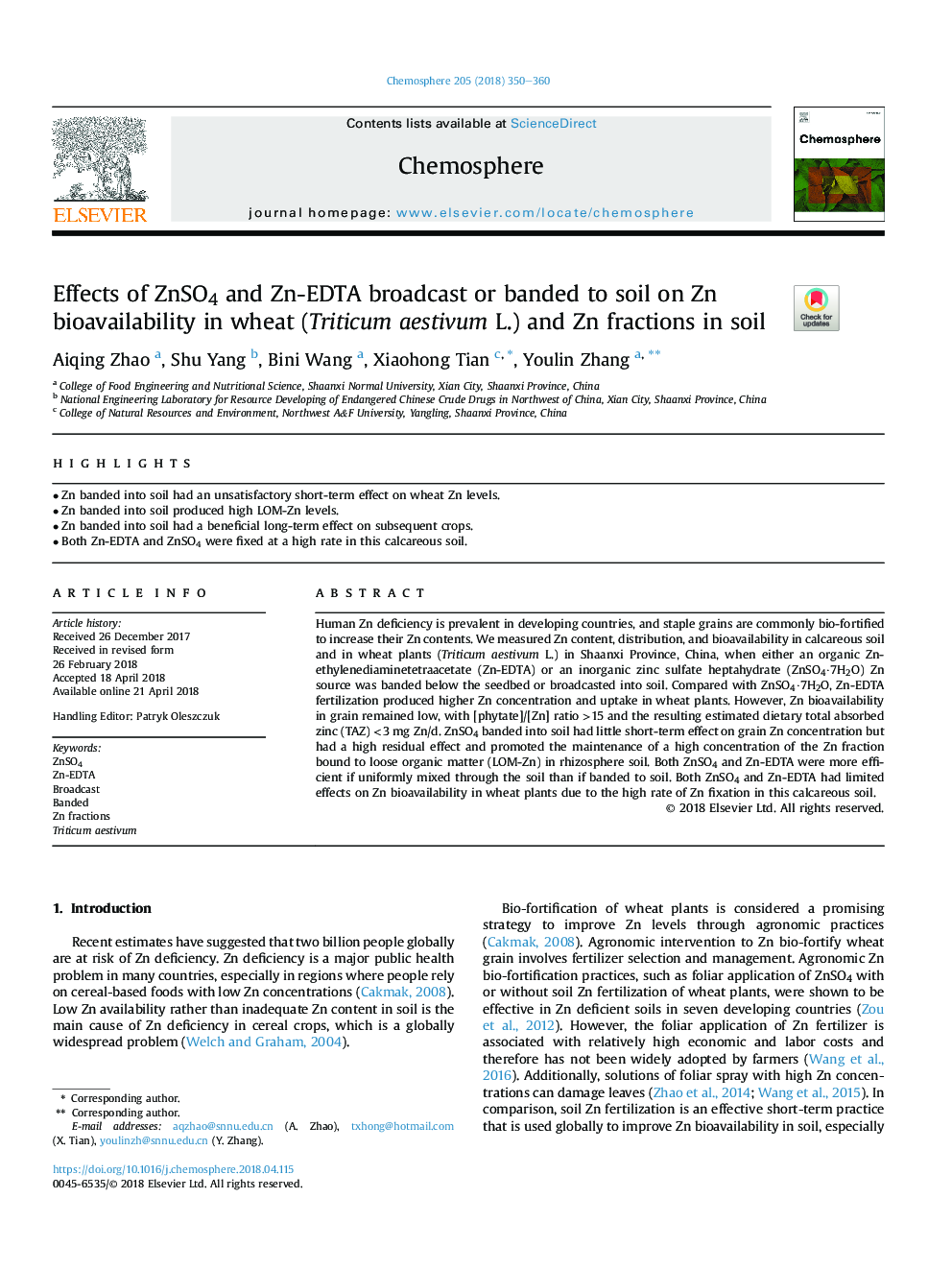| Article ID | Journal | Published Year | Pages | File Type |
|---|---|---|---|---|
| 8851140 | Chemosphere | 2018 | 11 Pages |
Abstract
Human Zn deficiency is prevalent in developing countries, and staple grains are commonly bio-fortified to increase their Zn contents. We measured Zn content, distribution, and bioavailability in calcareous soil and in wheat plants (Triticum aestivum L.) in Shaanxi Province, China, when either an organic Zn-ethylenediaminetetraacetate (Zn-EDTA) or an inorganic zinc sulfate heptahydrate (ZnSO4·7H2O) Zn source was banded below the seedbed or broadcasted into soil. Compared with ZnSO4·7H2O, Zn-EDTA fertilization produced higher Zn concentration and uptake in wheat plants. However, Zn bioavailability in grain remained low, with [phytate]/[Zn] ratio >15 and the resulting estimated dietary total absorbed zinc (TAZ)â¯<â¯3â¯mg Zn/d. ZnSO4 banded into soil had little short-term effect on grain Zn concentration but had a high residual effect and promoted the maintenance of a high concentration of the Zn fraction bound to loose organic matter (LOM-Zn) in rhizosphere soil. Both ZnSO4 and Zn-EDTA were more efficient if uniformly mixed through the soil than if banded to soil. Both ZnSO4 and Zn-EDTA had limited effects on Zn bioavailability in wheat plants due to the high rate of Zn fixation in this calcareous soil.
Keywords
Related Topics
Life Sciences
Environmental Science
Environmental Chemistry
Authors
Aiqing Zhao, Shu Yang, Bini Wang, Xiaohong Tian, Youlin Zhang,
